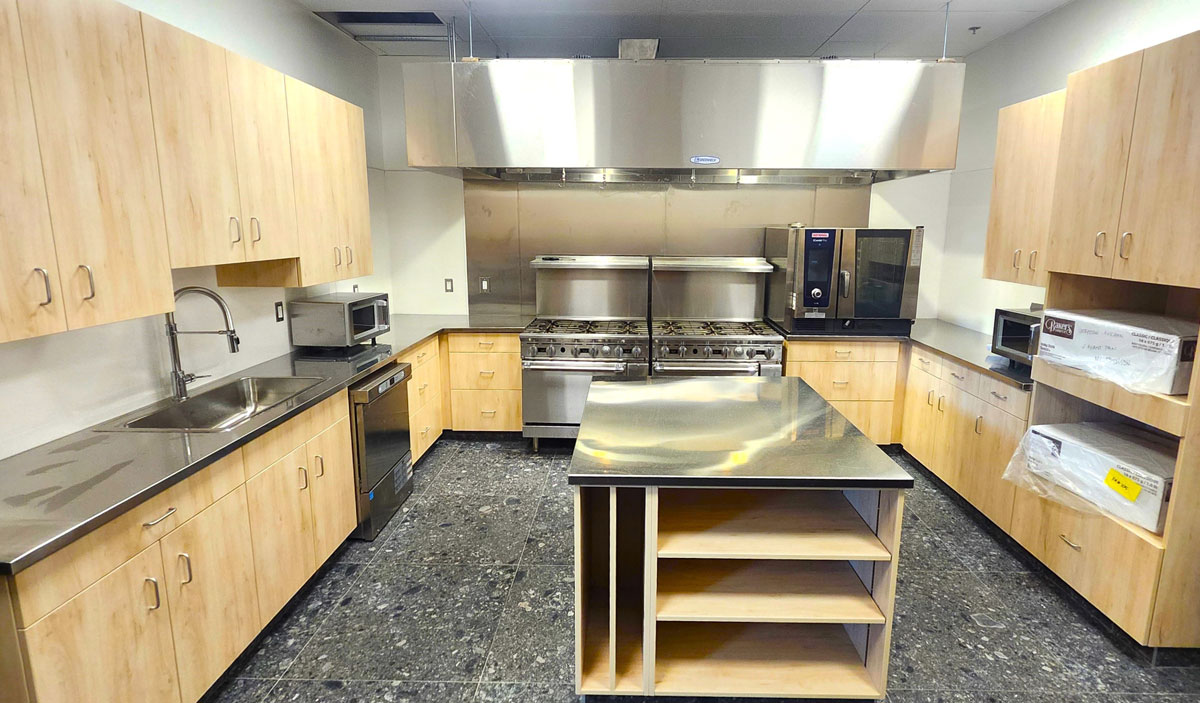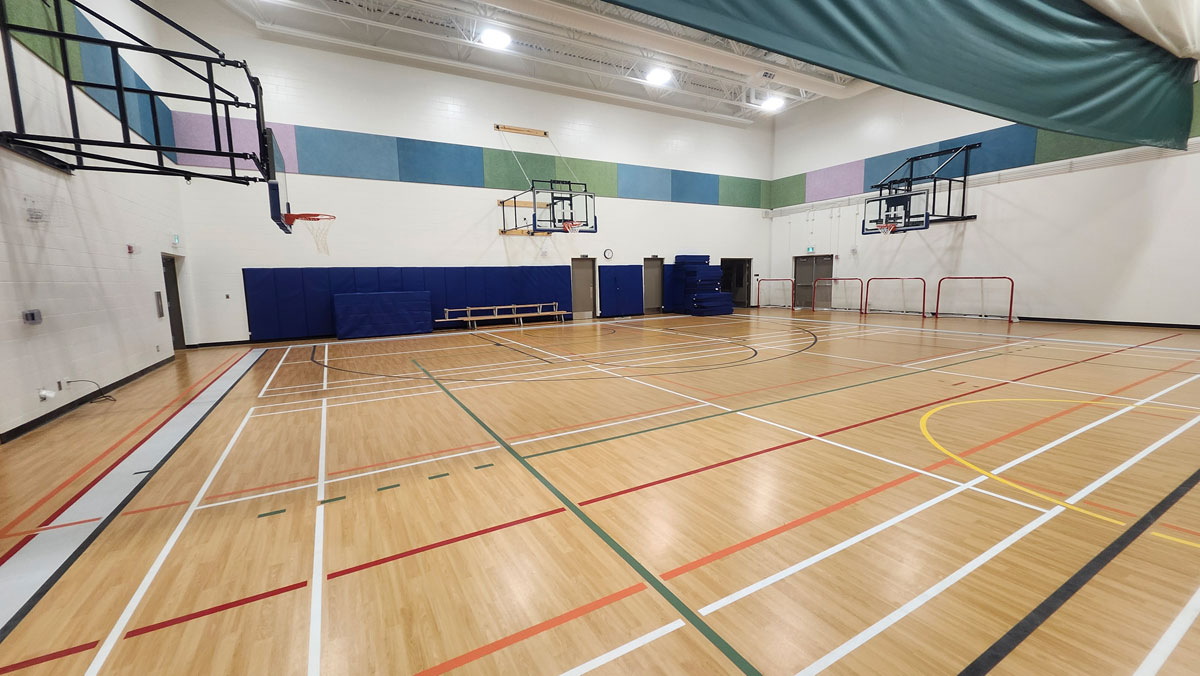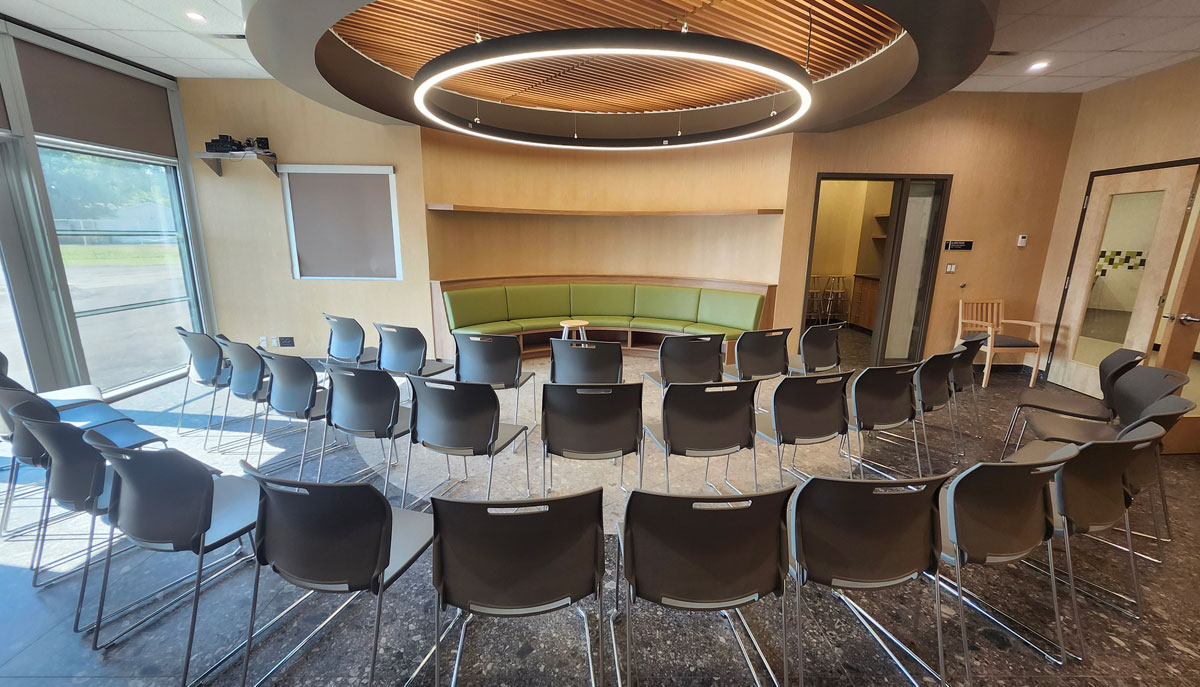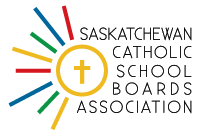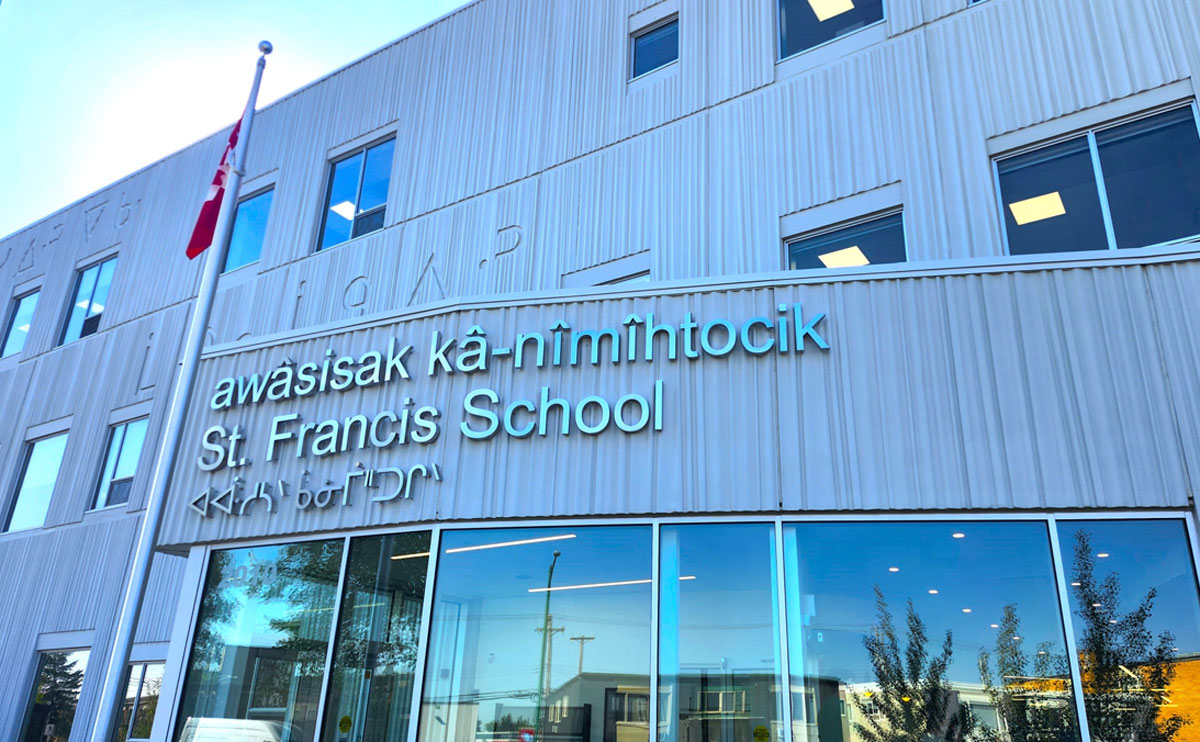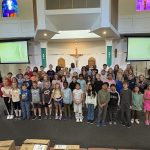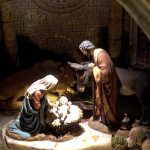GSCS Education Superintendent Kelley Cardinal and Facility Services Superintendent Ryan Martin begin a media tour of the new awâsisak kâ-nîmîhtocik St. Francis School. The Cree bilingual Catholic elementary school building opened its doors to students on Sept. 2.
The newly-opened awâsisak kâ-nîmîhtocik St. Francis School is a unique educational institution within the Greater Saskatoon Catholic Schools system.
The Cree bilingual elementary school opened its doors on 7th Street in the Grosvenor Park neighbourhood this September, after years of planning and construction. Newly named as awâsisak kâ-nîmîhtocik St. Francis School, it continues the focus on Cree language that was first initiated at the former St. Frances School – a facility that no longer had space for the growing program.
The new school continues to integrate Indigenous language, culture and traditions with Catholic teachings. School leaders say that the building and its programming reflects and embodies the Church’s ongoing journey of healing and reconciliation with First Nations communities, especially those affected by inter-generational trauma of the Indian Residential School system.
Elders, many of whom are residential school survivors, have been and will continue to be involved in every aspect of the school, including the suggestion and selection of the school’s new name, honouring nēhiyaw (Cree) language and traditions, as well as in the design of the entire school, which blends Indigenous art and culture with Catholic faith.
From a proposed 135 names, two were combined in the new name: awâsisak kâ-nîmîhtocik St. Francis School. The Cree name is pronounced “a-wah-sih-suk gha-knee-meet-oh-chik” meaning “children who dance.”
The school building’s exterior is shaped to reflect an image of the northern lights. According to Cree tradition, the northern lights are spirits of the ancestors dancing across the sky, making awâsisak kâ-nîmîhtocik (children who dance) an applicable name, in addition to choosing as the school’s new patron St. Francis of Assisi, who is known for his care and love of all God’s creation.
The previous patron of the GSCS Cree-bilingual school in its old location was St. Frances Xavier Cabrini, who founded the Missionary Sisters of the Sacred Heart of Jesus. The religious order founded by “Mother Cabrini” opened and operates schools, orphanages, and hospitals around the world.
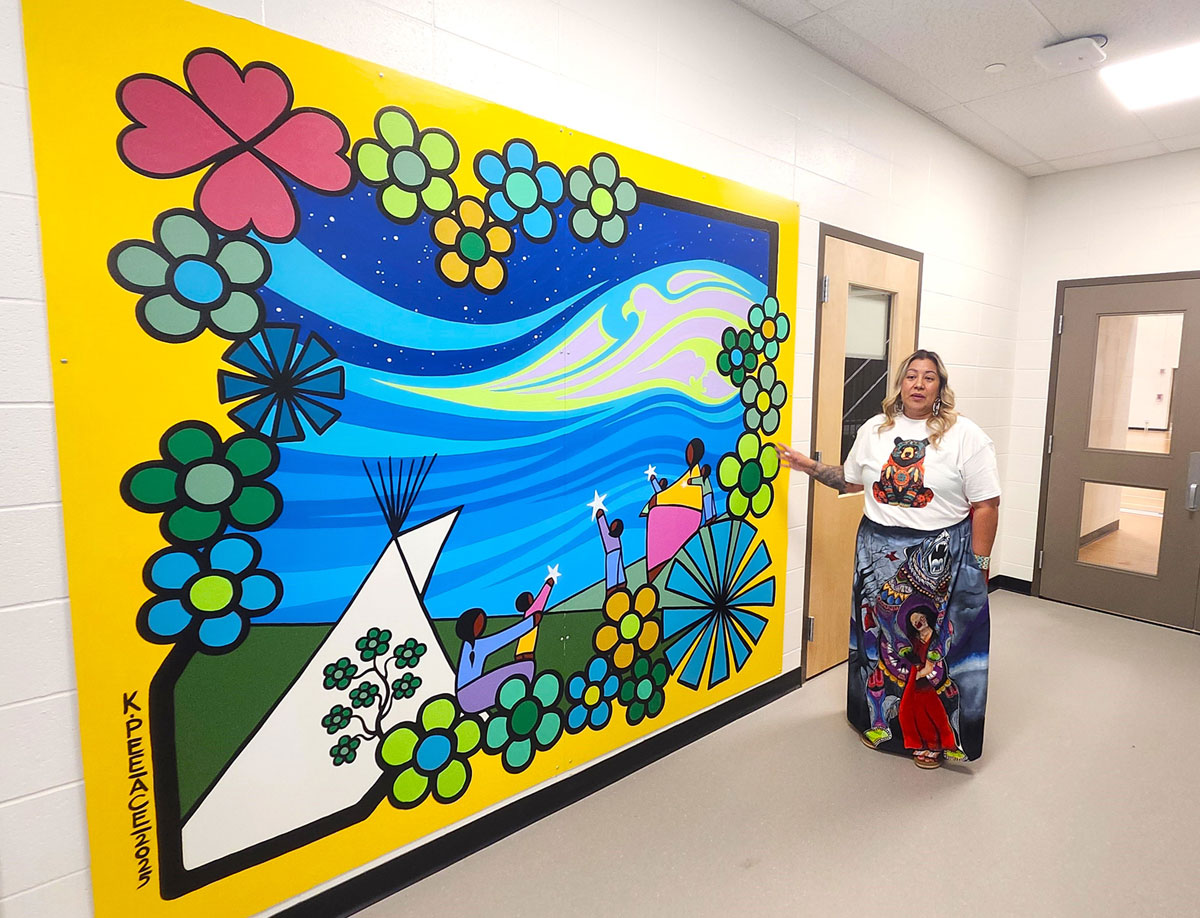
A concrete sign of hope and healing
For GSCS Education Superintendent Kelley Cardinal, the relocation and opening of the new school in their division, which honours Cree language and culture in a Catholic setting, is deeply personal, as it will provide a space for Indigenous and non-Indigenous students to learn Indigenous teachings and ceremonies.
“This school is more than a building. It’s a teaching tool. It’s reconciliation in action. Being in a Catholic school division and having the opportunity to do this is significant,” she said.
“We don’t shy away from history. We acknowledge it, and we work through it together,” said Cardinal who celebrates her own nēhiyaw heritage, and who served as vice-principal at the program’s former site.
Cardinal said that the new awâsisak kâ-nîmîhtocik St. Francis School will lead an emotional effort to bridge the painful history between the Catholic Church and Indigenous Peoples with a future rooted in shared purpose, healing, and hope.
The curriculum, ceremony spaces, and placement of sweetgrass and birch trees all reflect a deep intention to honour the Indigenous worldview alongside the Catholic faith.
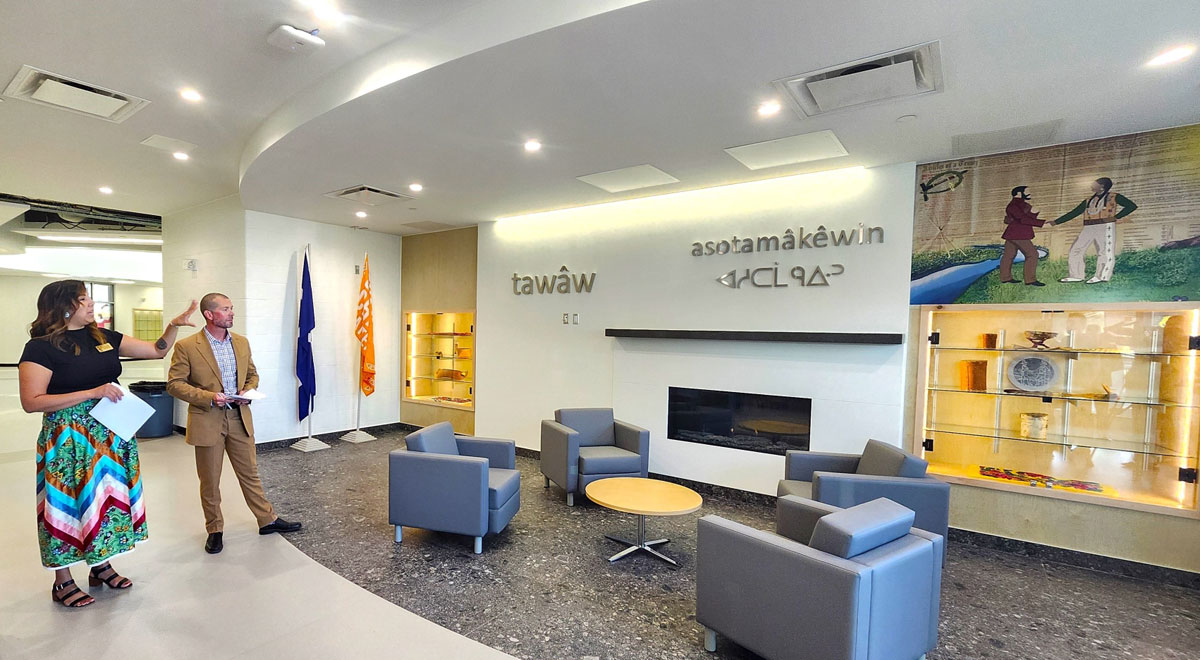
Students will participate in daily prayer, religious education, and attend Mass, as part of its Catholic school division’s identity. However, they will also engage in smudging, attend feasts, participate in sweat lodges, and learn about Indigenous culture and language on a daily basis.
The Catholic church’s history with Indigenous Peoples left deep wounds, which for many reopened after reports of unmarked graves at the site of a former residential school in Kamloops. Cardinal said many staff members at the former St. Frances School were gravely affected and emotional about those discoveries, which brought back their own families’ painful experiences at residential schools.
The new school will display a crucifix carved in stone alongside a braid of sweetgrass and a birch tree, symbols that represent the intention to bring together the Indigenous and Catholic way of knowing. That principle of coexistence will be woven throughout the school, from learning how to grow traditional plants used for medicine to processing wild game, such as deer and moose.
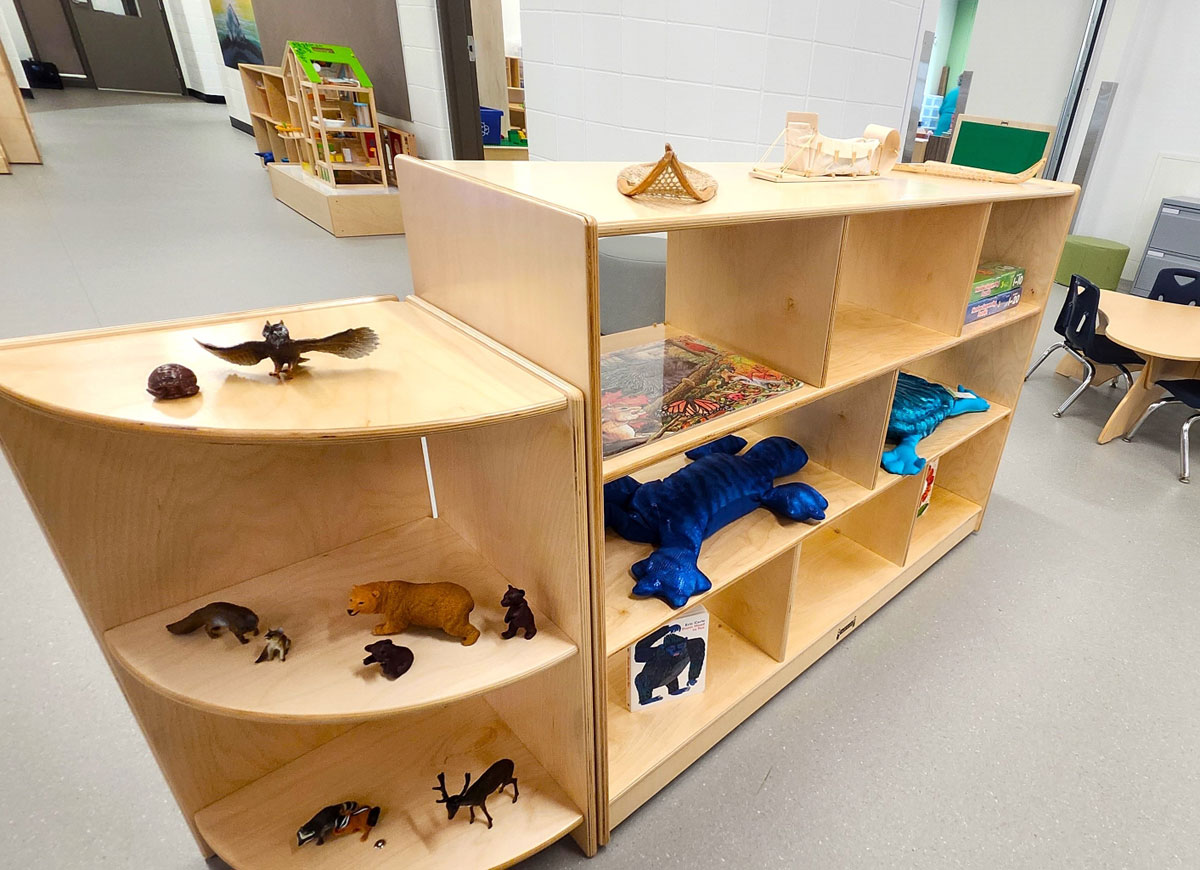
The school will also feature a room where Elders and Knowledge Keepers will share stories and teachings, as well as a tipi structure in an open space near the entrance, which will serve as a gathering place for events and other festivities. The stage is adorned with a ribbon skirt art installation and original tipi poles from the old site.
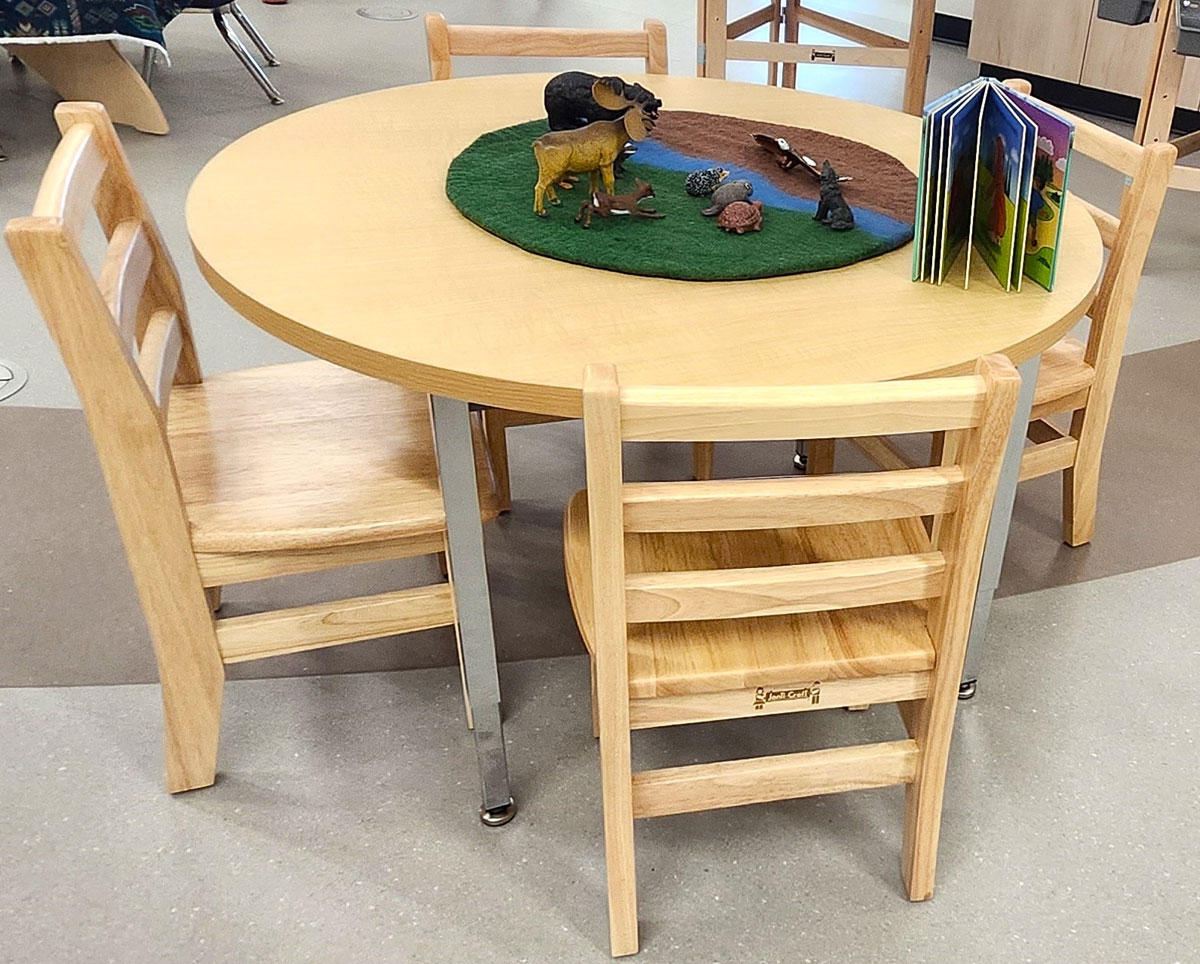
Students will step into a space where they will learn about their language, spirituality, and history. Teachers will work in pod-style teams to personalize learning. And most importantly, students and staff will see themselves in the stories told, in the languages spoken, and in the values upheld.
“When I look at our students, I see myself. And when I see our elders here, I see healing. This school is about learning. But it’s also about love, justice, and walking forward together,” said Cardinal.
“When I walk the elders through the building and see tears in their eyes, they can hardly believe what they’re seeing. They see their identities represented, their knowledge respected, and their dreams realized. That’s healing. It’s not about erasing the past. It’s about de-colonizing space. About making room for both, where there wasn’t room before.”
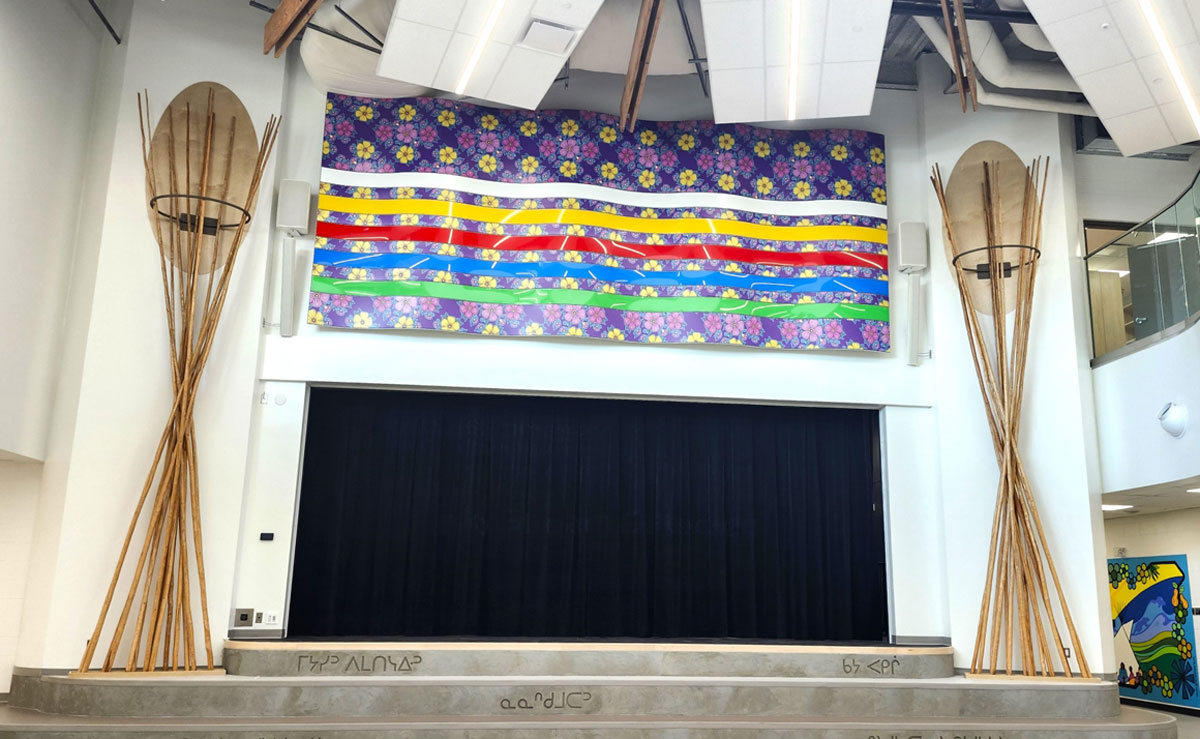
The kitchen will be the site of food preparation for students during the year. 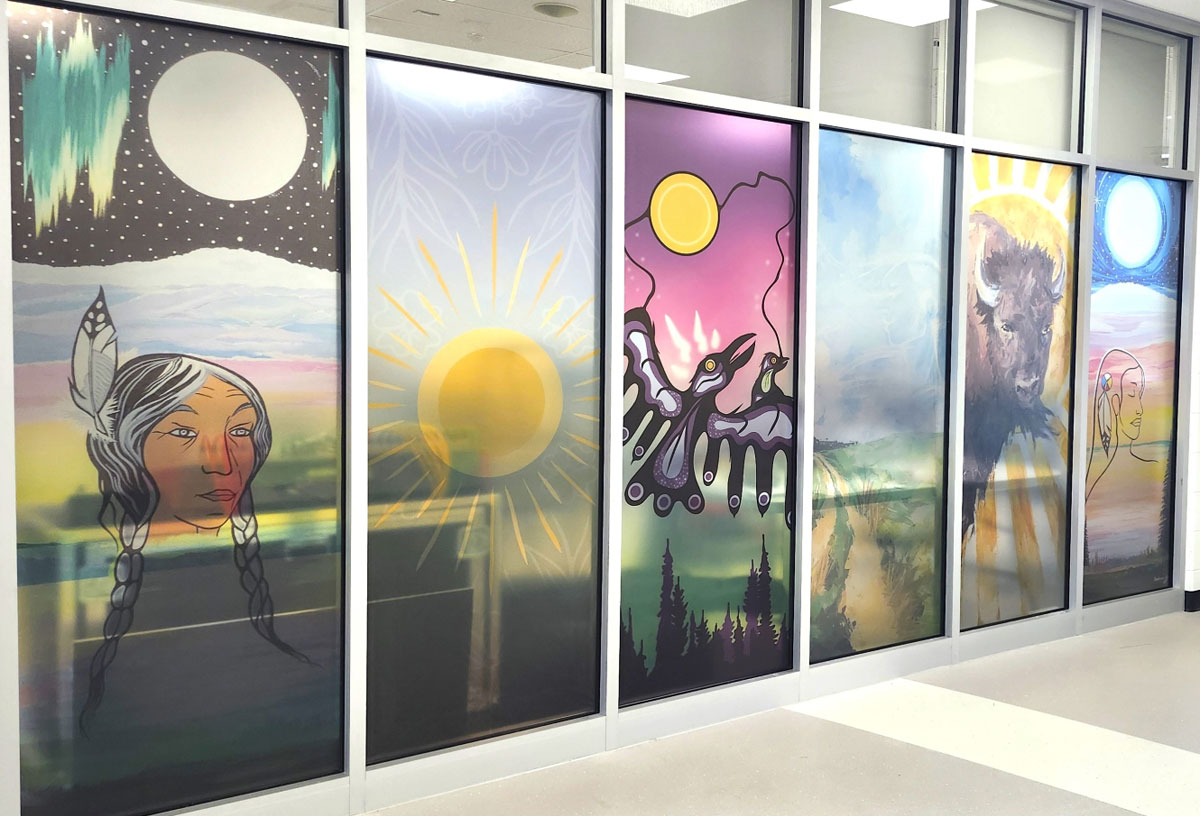
More information from the Greater Saskatoon Catholic Schools website:
Located at 2010 7th Street East (the former location of St. Charles School, then of Sion Middle School), the new school brings together students in pre-kindergarten to Grade 9 who previously learned in two different Saskatoon locations (McPherson Avenue and Bateman Crescent) to accommodate growth of the Cree language and cultural program.
The exterior of the building features Cree syllabics to encourage language learning and to serve as a form of outreach to, and teaching for, the broader community. Prefabricated modular panels give the “curved” look of the building that is meant to represent the dancing movement of the northern lights.
Extensive consultation with Elders, knowledge keepers, students, families and staff means all aspects of the school are culturally aware. Classroom signs in English and Cree, colour schemes on each of the three floors that represent different natural elements (1st floor: Rock; 2nd floor: Earth; 3rd floor: Human), a bulkhead installation that that depicts the constellations of the night sky during the signing of Treaty 6 in 1876 at Fort Pitt, and artwork throughout the building—including a portrait of the school’s namesake St. Francis of Assisi—demonstrate commitment to treaty education, reclamation of Cree language and culture, and the Catholic faith.
An official opening is planned for October 3. Open houses for the public to see the school and learn more will be planned for the future.
A brief overview of Cree language and cultural education at Greater Saskatoon Catholic Schools:
- 2007: language and cultural program begins at St. Frances School on McPherson Avenue
- Adding one grade per year, the program grew from 40 to over 600 students from over 50 Saskatoon neighbourhoods in 12 years.
- 2016-17: A replacement school became the top priority for the division’s capital plan.
- 2017: The Cree language program received the SSBA’s Premier’s Board of Education Award for ni ahkwatonâmonân: An Indigenous Language Pathway to Improved Student Learning Outcomes at St. Frances Cree Bilingual School.
- 2018: The Bateman Crescent location (former St. Patrick School) was added to host grades 6 – 8 because there was no more space to expand at the McPherson Ave. location.
- 2019: Grade 9 was added at the Bateman Cres. location.
- March 2020: The Government of Saskatchewan announced planning and design funding for a replacement school.
- Fall 2021: The former Sion Middle School is demolished to prepare for the new school.
- Spring 2022: Design and planning—guided by Elders and informed by students, parents, family members and staff—began.
- June 2023: A construction ceremony and blessing of the land event kicked-off construction.
- December 2024: The new name—awâsisak kâ-nîmîhtocik St. Francis School—was announced. (Link to ARTICLE)
- September 2, 2025: The new school welcomes students!
Select features of awâsisak kâ-nîmîhtocik St. Francis School:
- All aspects of the school are culturally-aware through consultation with Elders and knowledge keepers. There was extensive involvement of students, families and staff.
- The modular panel “curved” design is inspired by the northern lights. A “boxy brick” structure was purposefully avoided because it could provoke possible trauma related to residential schools.
- Cree syllabics on the exterior encourage language learning and are a form of outreach to, and teaching for, the broader community.
- The welcoming front entrance faces east, representing creation and a new beginning.
- The Saskatoon Tribal Council 72-space early learning centre is in the east end of the 1st floor.
- The “pod” structure for classroom spaces will encourage collaborative learning.
- Colour schemes and design elements on each floor represent different elements: 1st floor Rock; 2nd Earth; 3rd floor Human.
- A bulkhead installation on the 1st floor contains lights depicting the constellations of the night sky during the signing of Treaty 6, at Fort Pitt, in 1876.
- Beams from St. Charles/Sion Middle School have been repurposed in the new school to honour the history of the school and location.
- The back alley will be used as the bus drop-off and pick-up loop to alleviate traffic congestion on the streets.
